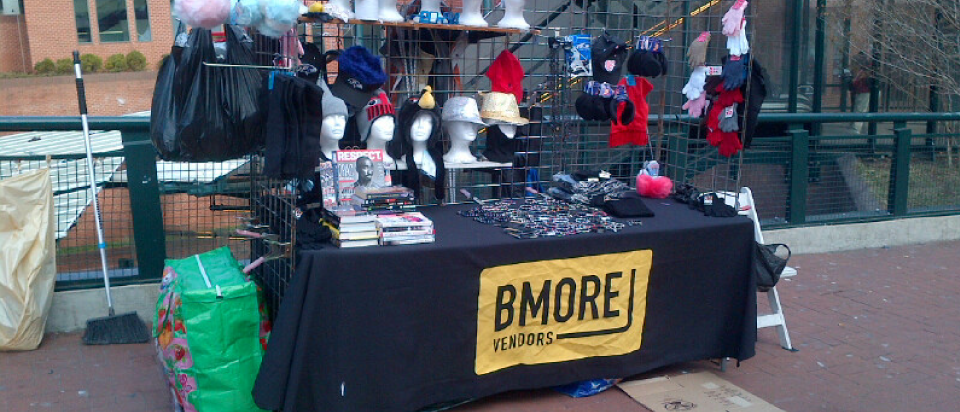Baltimore’s Lexington Market opened in 1782 and is one of the longest-running markets in the world. A part of the Bromo Tower Arts & Entertainment District, the area surrounding Lexington Market has gone through many of the same ups and downs as much of Baltimore’s West Side. Located just half a mile from the thriving inner harbor and Camden Yards, this historic landmark might as well be in another city. Few trek the four city blocks to the market, the exception being those adventurous few who break expectations for Faidley’s award-winning crab cakes.
Many citizens are afraid to visit the market. Its surrounding area is known as a hotbed for the prescription drug trade, with regular examples of addiction and poverty. In the midst of those illegally peddling goods, there are a few legal vendors making a living selling sundries to locals and tourists. These legal vendors have little differentiation from the illegal vendors and are often given a bad rap, though everything they’re doing is aboveboard.
As a part of Kyla Fullenwider‘s Design for Change course at MICA, I joined a group of socially-minded students to increase the visibility and differentiation of legal vendors outside the historic Lexington Market. We spent weeks at the market observing and mapping the assets of the space. Working directly with Brian Greenan from the Mayor’s Office of Economic Development, we were given a unique view of a seemingly deteriorating landmark.
Public perception aside, the historic market is buzzing with activity on a daily basis. Alive with craft fairs and concerts, this market is a hub for all methods of public transportation – the subway, light rail, and busses. In addition to being small business owners and entrepreneurs, these legal vendors act as “eyes on the street.” They are regularly consulted if there’s drama outside the market, as they are keenly aware of the day-to-day happenings in the area.
Brian knew these legal vendors would be instrumental in changing the public perception of the area surrounding the market. He called on us to help them realize their importance, and differentiate them from the all-too-common illegal vendors in the area. We understood the mission of this project would be the following:
We want legal vendors to see themselves as part of the solution to improving the Lexington Market experience.
As a part of this mission, we would help the legal vendors comply with the current regulations, provide opportunities for them to voice ideas to policymakers, and help them fairly compete for business.
We determined the solution to this problem wasn’t one sided. It would need to be approached from a variety of directions to be successful.
We split into small groups to build a wide variety of concepts, from feasible to far-fetched. Throughout the project we brought rough prototypes to the market to test new set-ups and brand concepts with local vendors.
We met with the license holders – some who had been in business since the mid-1970s – to better see the history of the market from their perspectives. Together, we built Lego mock-ups of what an ideal future Lexington Market might look and feel like. Those who had been vending at the market prior to the 1980s remembered a more positive time, when people from all economic and social backgrounds would flock to the market for quality food and groceries.
We pitched our designs and ideas to the Mayor’s office, Vendor Board, MICA office of Community Engagement, and street vendors. The project was also featured on MICA’s website and in MICA’s quarterly magazine, Juxtapositions (page 16-17).
The Mayor’s office has already provided vendors with weatherproof branded tablecloths and vending location updates based on our recommendations.

Vendor displays with updated branding | Photo courtesy of Brian Greenan
Our research and designs will be taken into consideration as the Bromo Tower Arts and Entertainment District continues its billion dollar transformation, through $542 million private and $465.1 million public investment.
“These community development initiatives demonstrate that the City validates the concerns of property owners, small business owners, pedestrians, and retailers.” – Mayor Stephanie Rawlings-Blake (Juxtapositions, September-October 2013)
“This is exactly why I contacted MICA. You’ve come up with exactly what I was hoping for: a solution that is simple and effective.” – Brian Greenan, project coordinator in the Mayor’s Office of Economic & Neighborhood Development (Juxtapositions, September-October 2013)